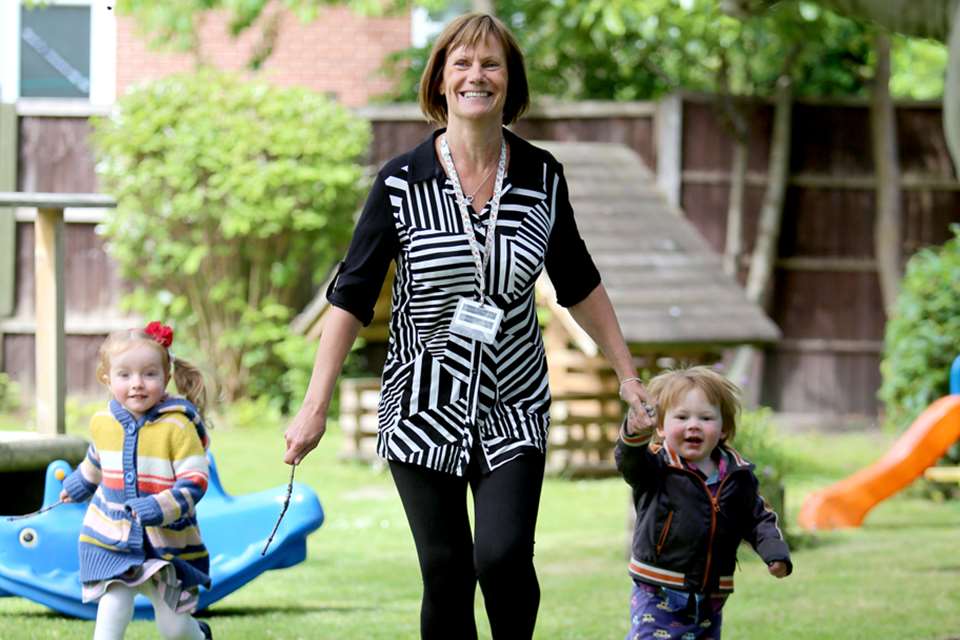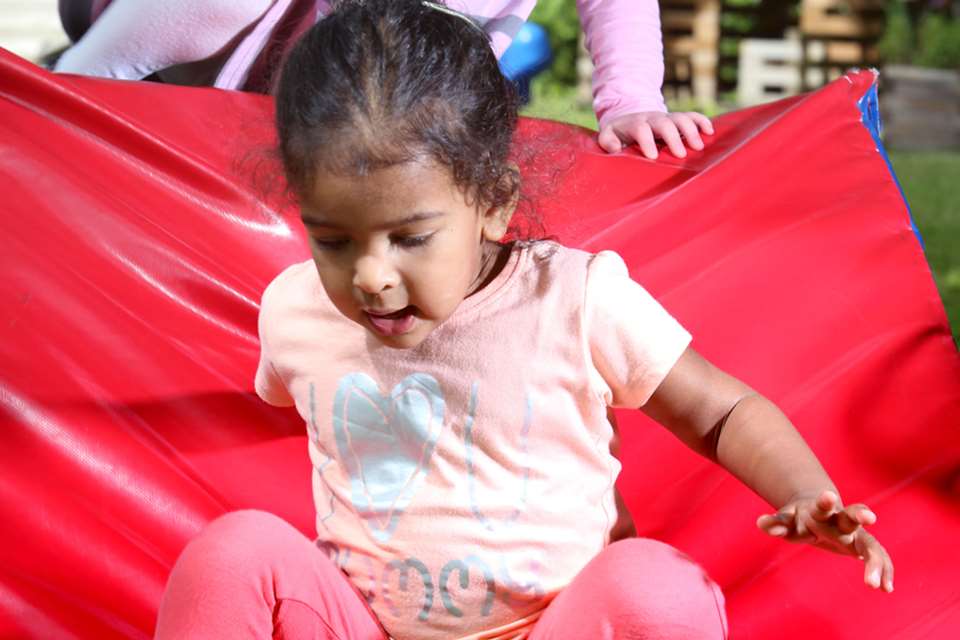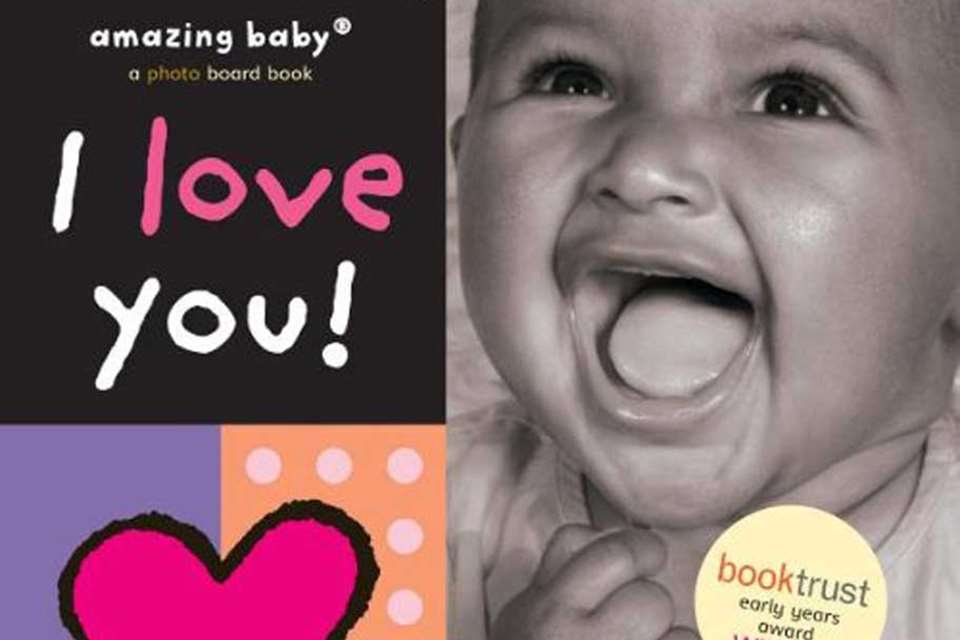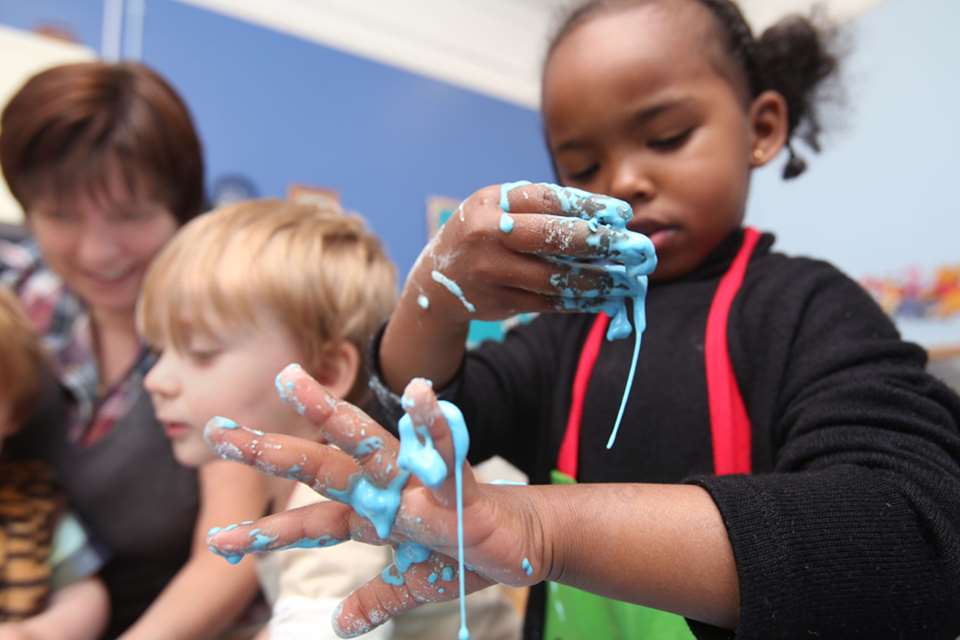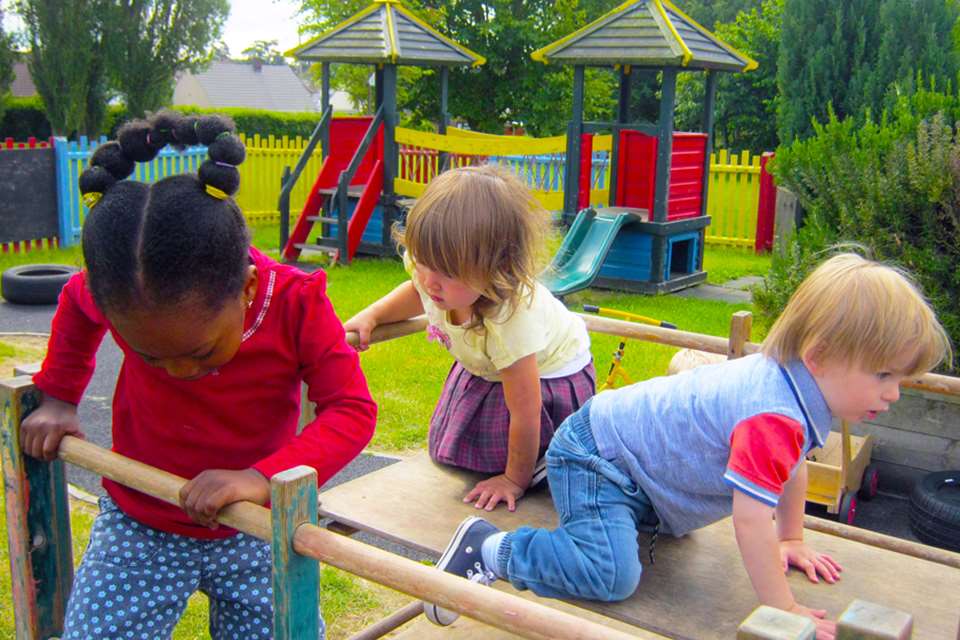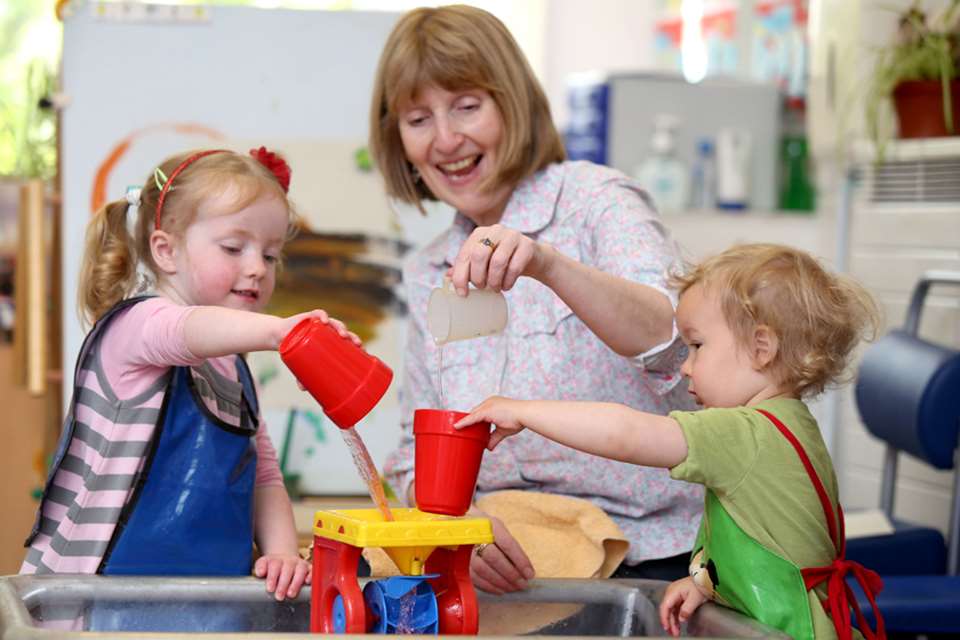Learning & Development: Communication & Language - Play with words
Judith Stevens
Monday, June 29, 2015
Sharing stories and rhymes with children right from the earliest years will help them develop vital communication skills. Judith Stevens explores the opportunities and benefits across the age groups.

Communication and Language (speaking and listening) underpin all future learning. It is vital that very young children have frequent daily opportunities for sustained conversations with caring, interested adults - and, alongside 'hands-on play' interactions, rhymes, books and stories can provide great starting points for talk.
Babies communicate in a wide variety of ways - wiggling their toes, making eye contact, moving in deliberate ways, gurgling, making sounds with their voices, squealing and babbling to communicate with trusted adults. As they grow, children develop language rapidly during their second year of life. They have a strong impulse to communicate, trying out new sounds and words. They learn best through experiences that engage all their senses in a safe and nurturing environment.
Language development at the age of two (understanding and use of vocabulary and use of twoor three-word sentences) strongly predicts children's performance on entry to Year 1 of primary school (Roulstone et al, 2011).
An American longitudinal study (Hart and Risley, 1995) found that by the age of 24 months, children in homes where adults spoke to children the least heard less than a quarter of the words heard by children in 'high talk' families. This had a direct impact on the expressive vocabulary (words used) by the children, the researchers found - by age two and a half, the children in 'low talk' families had less than a third of the vocabulary of the others.
LEARNING BENEFITS
Rhymes and stories need to be central to under-threes provision as they help children to develop:
- listening and attention skills
- turn-taking
- interaction skills
- an understanding and use of words
- knowledge and use of actions, gestures and signs
- phonological awareness, that is the ability to be able to listen to and know about the sound structure in words. This is vital for later reading and writing.
Stories and rhymes are really effective ways of introducing and modelling the use of new vocabulary. Many families use jingles, songs, rhymes and stories with their small babies and toddlers at home, but some don't. A Booktrust Survey (2009) found that two-thirds of parents didn't use rhymes regularly with children, and a quarter stated they had never used a rhyme at all.
But story and rhyme times with an adult and one or two young children offer fantastic opportunities for close, warm, relaxed interactions. Stories with repeated or rhythmic text and simple finger rhymes with actions are particularly helpful in promoting talk with young children.
The everyday practice of sharing a storybook with a child, from birth, is extremely powerful, not only in terms of developing language but in feeding imagination and creativity. As Raikes and colleagues (2006) found, 'the period from 14 to 24 months appears to be one during which child language and maternal book reading may together begin a "snowball" effect for subsequent book reading and experiences and development'.
PLANNING
Large story groups for children aged under three years really do not work! In fact, the younger the child, the smaller the group needs to be. A very short session with one baby and a trusted key person chanting a rhyme, tickling toes or sharing a cloth or board book in a comfy chair can be perfection.
Two or three children aged under two snuggled on a sofa, chatting about a favourite tale and singing along to a familiar rhyme offers opportunities to tailor support and build on children's own interests and real enthusiasms.
Very young children need to be in small groups, often with more than one adult, who can model finger plays and action rhymes and actually share a book or story.
QUALITY AND QUANTITY
It is important that young children have access to a range of books on a day-to-day basis, and these books need to be of a high quality and well maintained (see pages 26-27). They will include cloth books, bath books, board boxes, home-made books with photos of familiar people and items, and interactive books. A wicker basket or wooden box with a few cherished books is highly preferable to racks of dog-eared tatty books that aren't used.
Young children really do often 'judge books by their covers' and the illustrations inside, so when sharing books it is as important to spend time discovering and chatting about the pictures as it is to share the text. A 'dialogic talk' approach to book sharing is seen as a particularly useful tool for developing talk.
When practitioners use this approach, children are in control of the book-sharing experience - choosing favourite pages, poring over illustrations, talking about parts of the story that engage them, rather than 'starting at the beginning and whizzing through to the end'. These interactions with books give children time to revisit favourite parts of special books and wallow in the joy and wonder of the book-sharing experience.
Storytimes should be looked forward to by children, parents and practitioners. It is far better to plan to share a short book and have lots of time to look at and talk about the pictures than to rush through a longer book. Practitioners need to 'tune into' children and introduce new books that support children's interests, or revisit favourite books - that 'special' book will never bore the child who loves to hear it, over and over again.
Children need daily access to short story and rhyme time sessions, but also spontaneous sessions with trusted adults whenever they want them. Early years teams need to develop a culture in which rhymes, stories and books are an enjoyable part of everyday experiences.
Props and actions
As teams identify children's favourite rhymes and stories, they can develop collections of props to support sharing them. With young children, these props don't need to be expensive or elaborate - in fact, the simpler the better, for example:
- Incey, wincey spider - a spider hand or sock puppet
- Twinkle, twinkle, little star - a sparkly star to explore
- Two little dicky birds - two bird finger puppets
- Brown Bear, Brown Bear - a collection of chunky animals.
The important thing about props is the way they are used. Children need time to explore them, play with them, use them to retell the rhyme or story, but also use them in creative and imaginative ways too. Story props should enhance story and rhyme times, not inhibit them, so practitioners need to feel comfortable using them with children, which can take time and practice.
Very young children love to hear stories read aloud, without props too. They can feel the excitement of the story as a parent or practitioner narrates the tale. Reading stories aloud to children shares with them the difference between everyday conversation and written language - literary 'talk' - and can help to develop pleasure in reading.
The best rhymes to use with very young children are those with finger plays or actions, as children with little receptive language (understanding) and those new to English can join in with actions. For example:
- Two little dicky birds sitting on a wall
- Round and round the garden like a teddy bear
- Tommy Thumb
- Twinkle, twinkle, little star
- Row, row, row the boat.
Practitioners also need to share the importance of rhymes and books with families, and 'quick tips' are a good way to reinforce this. Photocopiable A4 sheets about 'Sharing Songs and Rhymes' and 'Sharing Books with your Baby' are available in 17 community languages from www.literacytrust.org.uk/talk_to_your_baby.
ADVICE TO PARENTS
Pass on information to families about how to engage their baby or young child in books and rhymes:
Where?
- Outside under a tree, on a rug, in the park
- In a 'hideaway', under a sheet between two sofas or under a climbing frame
- On a comfy sofa
- Sitting together on the floor
- In the car
- Anywhere!
When?
- From the cradle - reading aloud and chanting rhymes to babies sets the scene for life
- At a 'special' time of day that you both look forward to - whenever works best for you
- Whenever you have a spare minute or when your child asks you
- Chanting rhymes as you do other things - walking, tidying up, travelling
- Telling stories as you wait for the bus or walk along the road
- Any time!
What?
- Rhymes and books your child likes
- Picture books with beautiful illustrations
- Library books and loan books from settings and children's centres
- Jokes and little stories from magazines and newspapers
- Rhymes and stories in your child's first language
- Anything!
Remember
When you are sharing stories and rhymes with a baby or young child, smile, be animated, use facial expression and gestures to express meaning, and have fun together!
MORE INFORMATION
- Investigating the Role of Language in Children's Early Educational Outcomes by Roulstone et al (2011), DfE research report
- Meaningful Differences in the Everyday Experience of Young American Children by B Hart and TR Risley (1995), Paul H Brookes Publishing Co
- 'Mother-child book reading in low-income families: correlates and outcomes during the first three years of life' by H Raikes, G Luze et al (2006) in Child Development, 77 (2) pp924-53
- Planning for the Early Years: storytelling and storymaking by J Stevens (2012), Practical Pre-School Books.


